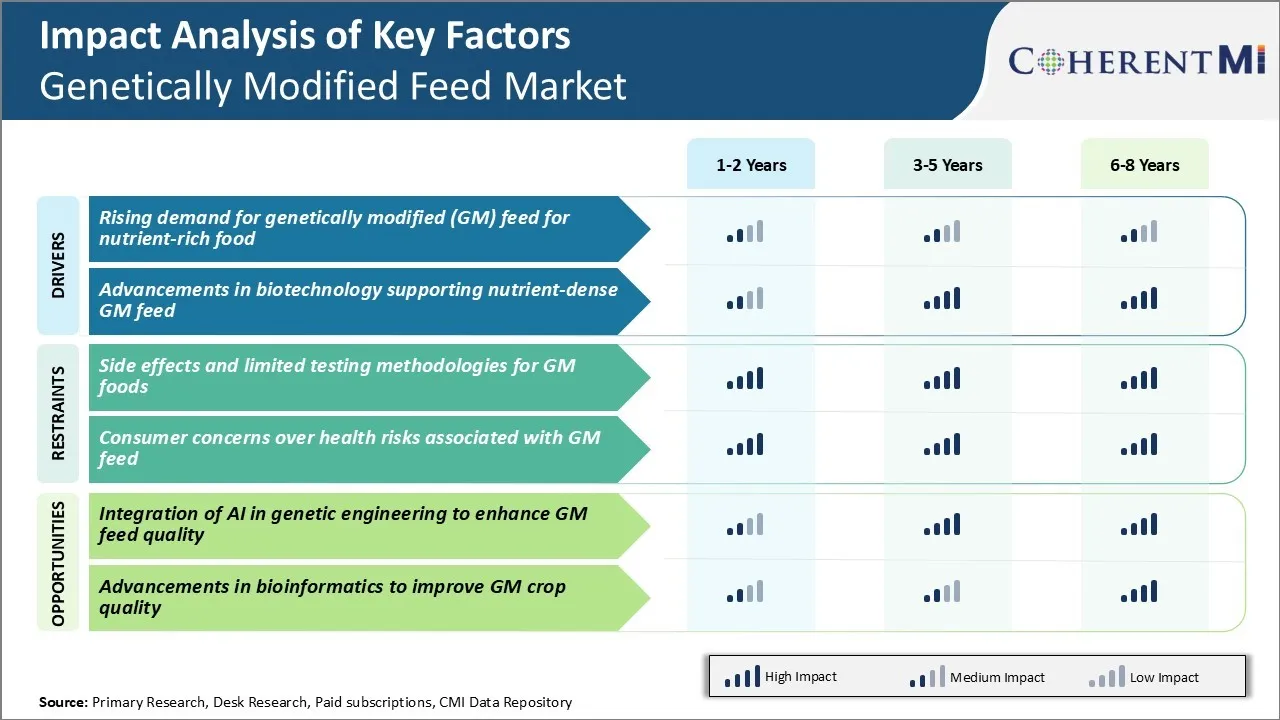Genetically Modified Feed Market Trends
Market Driver - Rising Demand for Genetically Modified for Nutrient-rich Food
The demand for meat and dairy products has grown substantially in the past few decades due to rising incomes and changing dietary patterns around the world. However, conventional animal farming practices are struggling to keep up with this growing demand in a sustainable manner. This is where genetically modified plays a crucial role by enhancing the nutrient profile of animal feed.
By directly modifying the genetic structure of crops scientists are able to develop breeds that are more resilient to diseases and climatic stresses. Furthermore, genetically feed is engineered to have optimal levels of essential nutrients like proteins, vitamins, minerals, and fatty acids that promote healthier growth in animals.
With traditional methods struggling to keep pace, genetically modified feed seems poised to play a vital supporting role in the global food supply chain. As this feed aids our transition towards sustainable intensification of agriculture, it is expected to boost growth of the genetically modified feed market.
Market Driver - Advancements in Biotechnology Supporting Nutrient-dense Genetically modified
Major breakthroughs in plant biotechnology over the past few decades have enabled scientists to improve the innate genetic traits of crops. Advanced gene-editing tools like CRISPR are revolutionizing our ability to select for desirable nutritional qualities during plant breeding. By carefully adding, removing or modifying specific DNA sequences, scientists can now develop customized crop varieties tailored for specific end purposes like animal feed.
Genetic studies have shed light on molecular pathways governing nutrient biosynthesis inside plants. Biotech companies are leveraging this fundamental knowledge to artificially induce enhanced nutrient production without disrupting yield.
As the tools of biotechnology evolve at a rapid pace, greater customization of feed through genetic tailoring will become possible. Advanced gene drives may allow stacking of dozens of nutritional trait genes within a single crop variety. Such advanced “designer feeds” hold promise to revolutionize genetically modified feed market.

Market Challenge - Side effects and limited testing methodologies for Genetically Modified Feed
One of the key challenges faced by the genetically modified feed market is the lack of comprehensive testing methodologies adopted to evaluate potential side effects of genetically modified feed. While genetic engineering offers promising benefits to enhance crop yields and nutritional value, there are ongoing concerns about its long-term health and environmental impacts.
There is also a lack of quantitative data on aspects like antibiotic resistance and herbicide tolerance that could potentially develop as a result of gene transfers from genetically engineered crops. Absence of long-term epidemiological data on human populations consuming genetically modified feed over generations has led to skepticism among some stakeholders. Addressing such knowledge gaps through improved research protocols and standardized post market surveillance mechanisms can help build greater trust in this technology.
Market Opportunity - Integration of AI in Genetic Engineering to Enhance Genetically Modified Feed Quality
The genetically modified feed market has a significant opportunity to leverage advances in artificial intelligence and machine learning to enhance the genetic engineering process. AI systems powered by vast genomic and phenomics datasets have the ability to revolutionize genome sequencing, gene selection and trait optimization capabilities. This can facilitate development of genetically modified feeds with substantially improved nutritional profiles tailored to the requirements of different livestock.
AI-powered tools also offer opportunities for real-time monitoring of field trials as well as post-marketing surveillance of Genetically modifieds. When integrated with blockchain and IoT, they can provide transparent traceability of feeds from farm to fork.
Such technological upgrades have the potential to address major challenges, accelerate product development cycles and drive faster adoption of higher-value genetically modified feeds with tangible benefits for consumers as well as players in the genetically modified feed market.